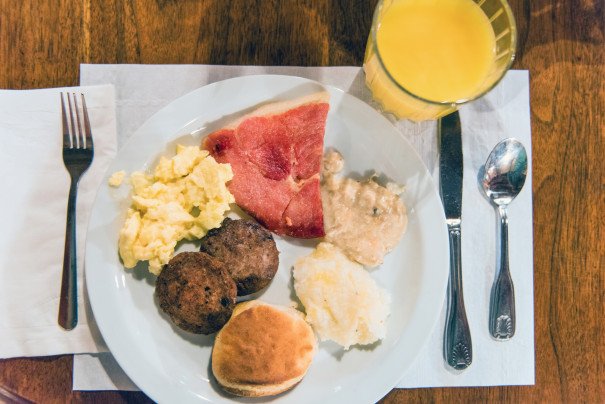
Plantation Biscuits

Plantation Biscuits
Pork and Biscuits in Mississippi
If it weren’t for this assignment, I could never afford to hunt at Fitch Farms. Not that I actually hunted, anyway: both the photographer and I declined when we were offered guns. I was too afraid I’d pull a Dick Cheney. We are both New Englanders who have landed as freelancers in the American South; we were covering this plantation-style hunting lodge outside of Holly Springs, Mississippi, for a magazine.
As is so often the case here in Mississippi, my favorite part of the day was the food. Before we climbed into the wagons, we were served breakfast. Though it was not fancy, it was a kind of eating that I consider one of the best traditions of the old and problematic South. Historian Joe Gray Taylor once wrote that the antebellum Southerners, not far removed from frontiersmen who took pride in their ability to feed their families, had “more respect for ‘big eating’ than for fine eating.”
Each of the foods was loaded on its own platter and, sitting alongside the owner of the farm and his staff, we served ourselves, family style. It being the South, there was pork in many guises: patties of sausage, strips of bacon, curtains of country ham. Scrambled eggs, grits, gravy. The biscuits came straight from the oven, with a pause only to be lathered in butter.
Despite the communal serving plates, the historic divisions of the South were also legible in this meal. We sat at a table in an old plantation commissary, an institution that helped keep black sharecroppers beholden long past emancipation. The diners were all white and the food was cooked and served to us by black women. That’s the way it’s gone in wealthy Southern homes for hundreds of years.
Southern food reflects a convergence of cultures—European, Native American, African. But more than anyone it is these women, most of their names now lost to history, who have carried this cuisine forward.